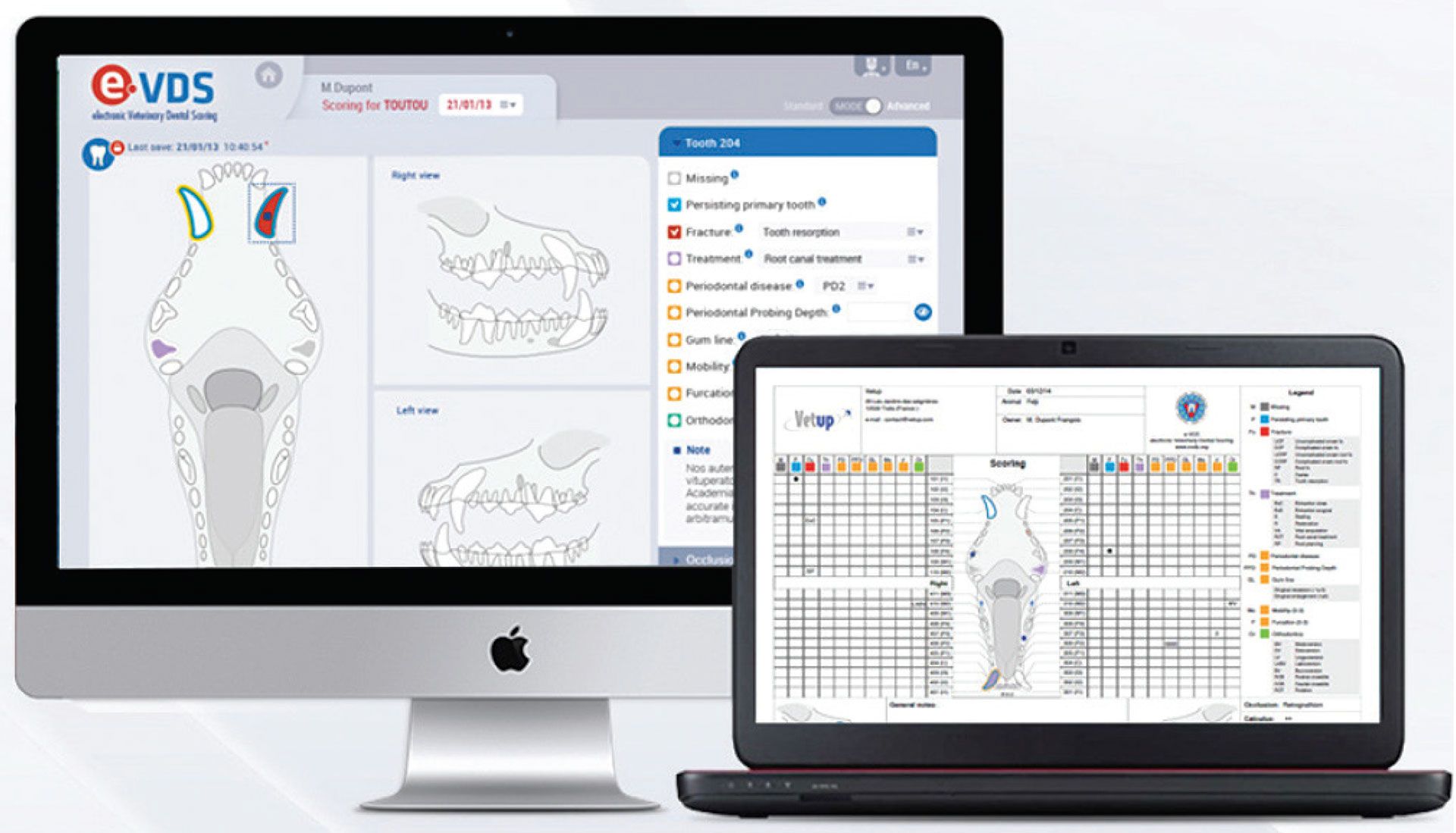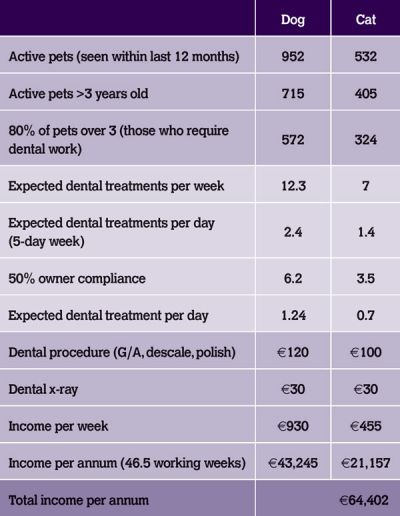The art of selling dentistry
Veterinary professionals are driven by their compassion for animals and seeing their role as financially motivated is conflicting. The concept of ‘selling’ in veterinary medicine often has negative connotations, but it shouldn’t be the case. A veterinary practice is a business and it needs to make money to pay wages, invest in better equipment and, most importantly, to improve overall level of patient care, writes John Breen BSc VN
Eighty per cent of cats and dogs over the age of three years have some degree of dental disease – that is the majority of any clinic’s patient database with a disease that will directly impact at least three of the five freedoms if left untreated. It is also worth noting that dental disease is inevitable. The cases are already there to be diagnosed and treated. It is honest money with the potential to make up 20 per cent of your practice income. So, how do we ‘sell’ dentistry?
Upskill
Sometimes there can be a disconnect between what we learn in university and what we see in clinical practice and this, subsequently, has a knock-on effect when it comes to promoting dental health. Dentistry is an historically overlooked subject in veterinary education, and it is difficult to sell an idea we are unsure of ourselves.
What plays to the strength of vets and nurses, however, is their obligation to collect continuing professional development (CPD) points annually. CPD is so much more than watching a free webinar just for the points. CPD requirements are a superb opportunity to further your career and feel valued for your expertise and skillset.
Dentistry is extremely practical and while there is an expense involved to attend a wetlab, the fulfilment and opportunity to work with other vets make it an overall enjoyable experience that will instantly make you feel more competent and confident. A combination of both practical and theoretical education is the best approach.
Affinity bias
The way that upskilling helps you to ‘sell’ centres around something known as ‘affinity bias’. Affinity bias is people’s unconscious tendency to gravitate towards people who are familiar. Two factors that heavily influence this are confidence and passion. If we have a disinterest in something or perhaps, we don’t feel we know enough about it, we will unintentionally transfer that uncertainty to the other person. Confidence and passion sell.
Communication tools
Unlike most presenting problems such as conjunctivitis, lameness or growths, dental disease is largely hidden and rarely presents itself as a notable problem to owners until the irreversible effects of periodontal disease have taken hold. To convey the implications of dental pathology, we need to make the invisible visible.
Dental x-rays are what I like to describe as ‘voluntarily compulsory’. No clinical exam of the mouth is complete without them. They give us a visual aid that is not only diagnostically crucial but it also obviously depicts the issues that need treating, to the owner. It may sound clichéd to call teeth ‘icebergs’ but it is an accurate comparison as two thirds of a tooth sits beneath the gumline. So, you have to explain to the owner that 66 per cent of the tooth has clinical pathologies. Pet owners do not typically have a veterinary background to fully understand the severity through words. Providing visual evidence to back up what you are saying simplifies the issue.
Using visual aids extends further than just dental x-ray; any physical proof you can provide gives you and your proposed treatment plan the power of legitimacy. Dental charts are another excellent visual aid to show your examination and findings. The more detail, the more reasonable your diagnosis looks. Traditionally, clinics will use paper charts but recent electronic alternatives neatly colour code and highlight your findings so anyone can make sense of it. They also give vets and nurses a systemic approach to charting, making sure nothing is missed. Remember, the dental case is there, you just need to find it and make it visible.

Figure 1: Making the invisible visible to the client.
Clients remember 25 per cent of what they are told in a consultation. Formally offering a ‘patient report card’ will mean they have the detail in front of them to review at home, discuss with family members and plan for the costs involved. It will vastly improve compliance and resulting income.
Of course, to chart and take x-rays you need to first get the customer on board during their initial visit. Plaque disclosing solutions have been around for a long time but have only made the leap to mainstream veterinary medicine in recent years. Much like a fluorescein stain to find ulcers in the eye, these impregnated swabs stick to the invisible plaque in the mouth. Applying it during a consultation can be the first step to admitting patients for a comprehensive oral health assessment and treatment (COHAT).
Guilt
Veterinary professionals are notorious for feeling guilty when it comes to charging for dentistry. Dentistry is full of unexpected complications and findings when you don’t have the set-up for a thorough clinical examination. A set price for a ‘dental’ doesn’t make sense because once you do more than scaling and polishing, you have entered the world of oral surgery and it's technically demanding. Why should a 90-minute orthopaedic surgery cost five times more than a two- or three-hour dental procedure?
The big reason why vets will give discounts is because they have no more than a visual clinical examination to rely on. They will give customers an estimate based on this and are essentially starting a procedure blind to find matters are much worse than they anticipated. What was originally going to cost the owner €200 is now double the price and explaining that to a client is extremely difficult. Performing a thorough clinical exam will give you a diagnosis that you can build treatment plans around and provide near accurate costings in advance of the procedure, as for any other surgeries you perform.
When you have an accurate diagnosis, don’t be compelled to offer three options, this is only abdicating your responsibility as the professional to the owner. The more options you present, the more difficult a decision it is for them to make. It lays them out in equal measure and, nine times out of 10, the owner will see it like this and choose the cheaper and suboptimal choice because they do not see why they should spend more if they don’t have to. What you should be doing is diagnosing the problem and presenting the best recommendation for that patient. If the owner asks for an alternative, you can then offer the second-best option and so on.
A customer’s compliance should never be assumed when prices exceed a certain figure because cost may not be a barrier. Advocacy for the best possible solution should always trump affordability and it’s the responsibility of all veterinary staff to prioritise the patient when proposing a treatment plan. Don’t feel guilty about successfully finding the source of an animal’s pain and offering the best solution.
Invest
A worker is only as good as their tools and, after upskilling, investment is required to implement the skills that you or your team have just learned. Investment takes time but investment at its core is about spending money on a product to turn a profit in the future. With dentistry, the cost of equipment makes its return in no time – as mentioned previously, you are not waiting for isolated cases to happen, the cases are there waiting. Dental disease is inevitable and extremely prevalent.
A survey in Australia showed that clinics lapse an average of 250 active clients, per full-time equivalent vet, every year and this is usually down to pet owners not having a reason to visit. Dentistry is not curable, but it does need to be managed. A mature plaque biofilm can develop within 48 hours of a descale and polish, dentistry is your key to regular visits and customer retention. No other condition can generate this level of management, that is seen across all breeds and species. Investing in dentistry is a no-brainer and with the right academic encouragement, is rarely a gamble.
Figure 2 conservatively looks at the average cost of a ‘dental’ in Ireland, keeping in mind that these procedures are being undercharged. Working on just 50 per cent owner compliance, only patients over the age of three years, excluding pre-anaesthetic blood tests, excluding post-operative analgesia and before a single extraction, the figures speak for themselves.

Figure 2: Average cost of a ‘dental’ in Ireland.
Conclusion
There is a huge expectation from vets and nurses with little formal education when it comes to dentistry and it is a precedent that needs to change for many reasons. That being said, there is a lot that we can do to encourage that change and make it exciting at the same time.
Selling is only a synonym for positively influencing someone’s opinion, an opinion they have come to you for as an advocate for their pet. Selling in veterinary is, simply put, a by-product of your professional expertise and responsibility.
Lincoln Institute. (Producer). (2020). Marketing Dentistry Series: Webinar 1-5 [Video]















